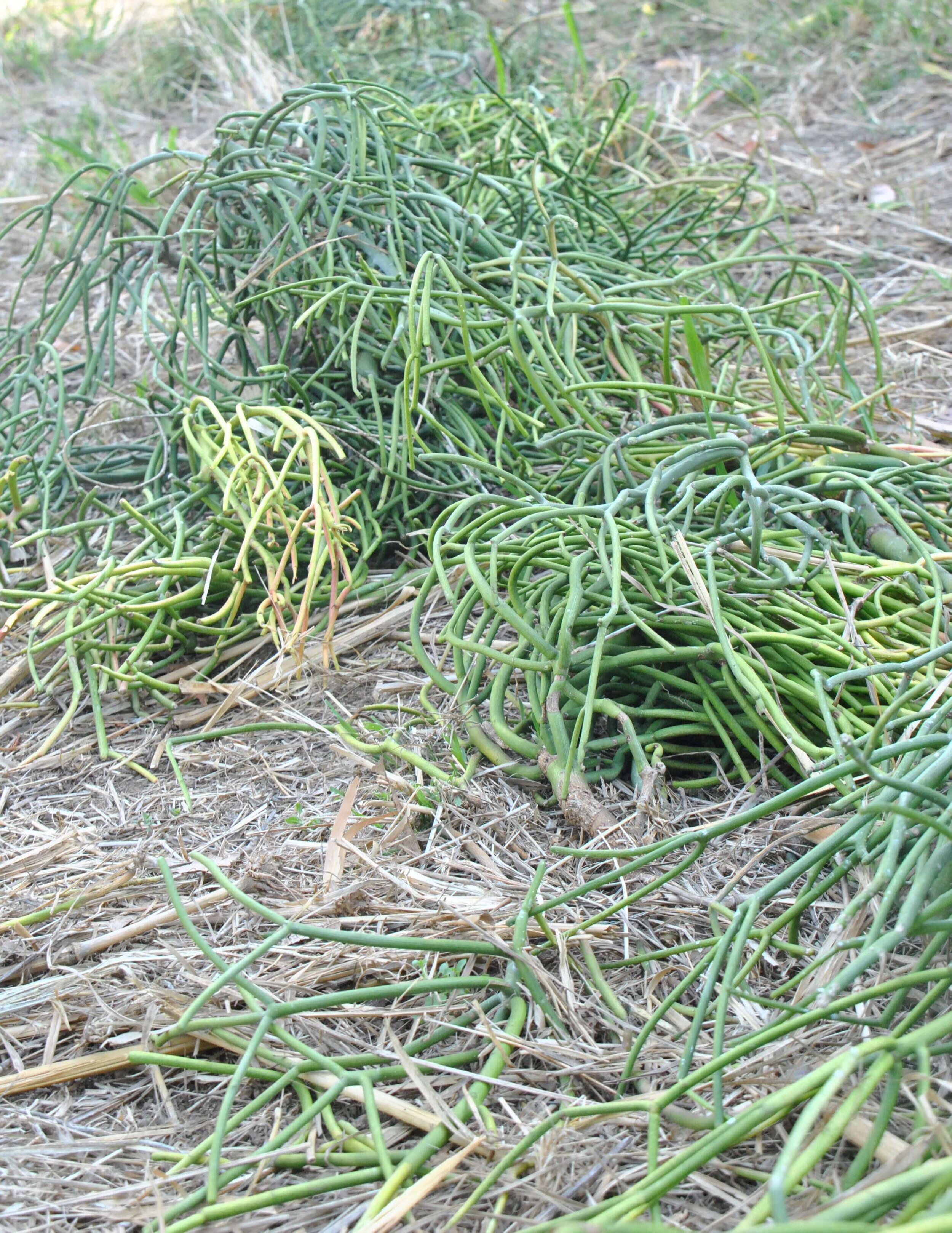Firesticks (Euphorbia tirucalli)
Growing Conditions and Spread
Euphorbia tirucalli has quite a few common names including firesticks, pencil tree, pencil cactus, sticks-on-fire, African milkbush, and Indian tree spurge. Henceforth I will refer to it as firesticks. Firesticks is a ornamental shrub or tree that can grow to 7m in height. Typically in cultivation it is pruned to keep a more dense hedge-like appearance. It originated in Africa and can grow in a wide range of well draining soils. Like most succulents it grows well in full sun and thrives on neglect as over-watering may lead to rot. Care must be taken while pruning as any discarded pieces are capable of setting roots and regrowing where they may not be wanted. As a plant that originated in a warm area they do not tolerate frosts.
Hazards
Plants in the Euphorbia species are notorious for their toxic sap which leads many people to remove the plant or never plant them in the first place. Euphorbia tirucalli is no exception with the general advice surrounding the plant is to wear protective clothing when touching/ trimming it including long sleeves and pants, gloves and eye protection. If the sap gets into your eye it can lead to severe injury and even blindness¹ and any sap on the skin can lead to an irritation, rash or even the sensation of burning. As such, this is one plant my children know to steer well clear of. Dogs and cats can also feel the effects of this plant as it can cause severe dermatitis.
Euphobia tirucalli is suspected to be a cause of Burkitt's lymphoma, the most common childhood cancer in much of Africa.
Usage
Typically Firesticks are used as an ornamental with their showy green to red foliage, however there are a few more ways to use this plant!
The main way we utilise Euphorbia tirucalli is as a part of our fire break mitigation. Due to the dense, tall growth habit of pruned firesticks, along with it being a succulent that has a high water content; it has a low flammability. While a fire could still bypass a hedge of firesticks via embers, the theory is, any encroaching fire will be stopped in it’s tracks or at least slowed significantly by the plant, which is an important aspect for us given the slope we live on. There has been anecdotal evidence of this having worked for homeowners in California, this technique is not backed by a whole lot of science at this point.
The beginning of a Firesticks Firebreak Wall
In parts of Africa, firesticks have been used as an additional feed for cattle during lean seasons with research having shown the supplementation of firesticks to the cattle’s diet helped increase the overall weight in lean times².
Firesticks can be used to make an attractive hedge, particularly an edible additional fence for certain cattle like goats and cows.
Despite it’s toxicity, firesticks has been used as an alternative medicine in multiple countries³ however the benefits seem to be overwhelmed by the hazards of the plant.
Firesticks can be used as an erosion break for dry and bare soil or sand dunes.
There is potential to make biofuel from the sap, however research into this hasn’t been hugely successful to date.


